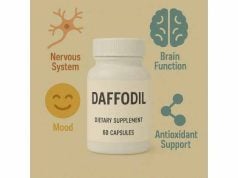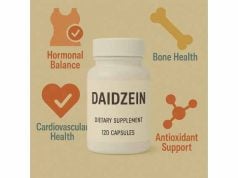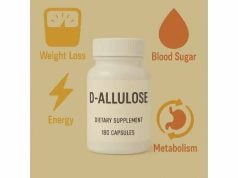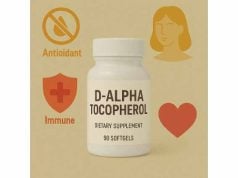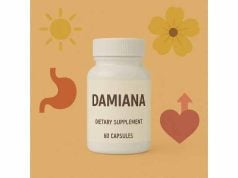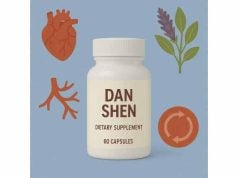
Douglas fir (Pseudotsuga menziesii) is best known as a towering timber tree, yet its fragrant needles, resin, and essential oil have been used for centuries in folk wellness—from clearing stuffy air to soothing tired muscles. Modern lab studies are beginning to map what traditional users noticed: resinous compounds such as pinene, sabinene, and terpinolene show antimicrobial, antioxidant, and calming properties. In practice, people encounter Douglas fir as a needle tea, a topical salve made from resin (“pitch”), or an essential oil for diffusers and massage blends. This guide translates the research into plain language: what Douglas fir may (and may not) do, smart ways to use it, how much is reasonable, who should avoid it, and how strong the evidence is today. You will find practical, safety-first tips and a candid look at the data so you can decide whether Douglas fir fits your routine.
Quick Douglas Fir Highlights
- Needle and resin compounds (pinene-rich) show antimicrobial and antioxidant activity in lab tests.
- Inhaled Douglas fir essential oil has demonstrated relaxation effects in older adults.
- Typical topical dilution is 1–2% essential oil in a carrier; avoid internal essential oil use.
- Not advised for pregnancy, infants, or people with fragrance or colophony allergies.
Table of Contents
- What is Douglas fir and its active compounds?
- What benefits are supported by research?
- How to use Douglas fir day to day
- Dosage guidelines and forms
- Side effects, interactions, and who should avoid
- Evidence summary and research gaps
What is Douglas fir and its active compounds?
Douglas fir (Pseudotsuga menziesii) is a conifer native to western North America and widely planted in Europe and elsewhere. Although it looks like a fir, it belongs to its own genus and is not a true fir (Abies). For wellness uses, the parts of interest are the aromatic needles and twigs, the resin (“pitch”), and the essential oil distilled from the foliage. These materials are rich in volatile terpenes that give conifers their characteristic forest scent and many of their biological effects in lab tests.
Key constituents. Douglas fir essential oil commonly contains monoterpenes such as α-pinene, β-pinene, sabinene, limonene, and α-terpinolene, plus esters like bornyl acetate in some chemotypes. The precise profile varies with geography, season, and the portion of the plant distilled, which is why different studies list different “major” compounds. This variability is normal for aromatic plants and means two Douglas fir oils from different sources can smell and act a bit differently. Extracts made with alcohol or water (from needles or bark) contain additional polar compounds—phenolics, tannins, and flavonoids—linked to antioxidant activity in vitro.
How those molecules might matter.
- Pinene isomers have been explored for antimicrobial, anti-inflammatory, and bronchodilatory potential in experimental settings.
- Sabinene and terpinolene are frequent co-constituents in Douglas fir oil; both contribute to the crisp, resinous aroma and have shown antimicrobial and antioxidant actions in test systems.
- Resin acids (e.g., abietic-type acids) occur in conifer resins across the pine family; they are sticky, protective compounds that can be made into salves and varnishes. Some people are allergic to them (more on safety later).
Traditional and modern forms. Historically, conifer needle teas were brewed in winter as a pleasant, aromatic infusion. Woodland communities made poultices or salves from pitch to seal minor skin cracks and abrasions. Today, Douglas fir appears commercially as:
- Essential oil (needle/twig distillate) for aromatherapy and topical blends.
- Loose needles (dried) for tea or culinary use.
- Resin salves prepared with oils/beeswax.
- Wood-derived extracts studied mainly for antioxidant properties and potential topical uses.
What Douglas fir is not. It is not a cure-all, not a substitute for antibiotics when infection is present, and not a safe oil to swallow casually. Essential oils are concentrated and require respect: a few drops represents large amounts of plant material.
Sustainability note. Needles can be harvested in modest amounts without harming trees, but resin and bark removals should be conservative and lawful. When you buy products, look for transparent sourcing (e.g., storm-fallen branches, licensed forestry byproducts) and small-batch or certified operations that document origin and chemotype.
What benefits are supported by research?
Research on Douglas fir for human wellness is still early, but several lines of evidence are relevant: phytochemical mapping, antimicrobial and antioxidant assays, toxicological screening, and a small human study on relaxation.
1) Antimicrobial and anti-virulence activity (in vitro). Essential oils and needle/bark extracts from Douglas fir and other conifers have inhibited growth of certain bacteria and fungi in lab dishes. The strength of this effect varies by strain, extraction method, and chemotype. While some studies find only modest activity, others suggest Douglas fir essential oil may be particularly interesting against respiratory pathogens such as Pseudomonas aeruginosa or yeasts like Candida albicans under specific conditions. Mechanistically, monoterpenes can disrupt microbial membranes, but it’s a long path from petri dish to clinic. In practical terms, these findings support uses such as deodorizing the air, cleaning hard surfaces with a dilute, properly formulated product, or adding the oil to hand-wash blends—not treating established infections.
2) Antioxidant potential (in vitro). Needle and bark extracts often register substantial antioxidant capacity in standard assays (DPPH, FRAP, ABTS). That suggests a reservoir of phenolics and tannins with free-radical scavenging properties. For topical formulations, such extractives may help protect cosmetic products from oxidation and could theoretically support skin barrier recovery when combined with established ingredients. Again, these are bench tests; human skin outcomes require targeted trials.
3) Relaxation and stress metrics (human study). A controlled program in older adults found that breathing diffused Douglas fir essential oil during a guided activity shifted several physiological markers associated with relaxation (heart-rate variability indices increased; high-beta and gamma brainwave activity decreased; high-alpha activity rose). Participants also reported lower state anxiety afterward. The experimental set-up used short exposure windows and compared Douglas fir with lavender; both performed similarly for relaxation indices. While not a clinical treatment trial, this supports using Douglas fir aroma for mood settling and calming ambience in low-risk contexts like evening wind-down.
4) Respiratory environment and perceived openness (theory plus tradition). Anecdotally, many users experience conifer aromas as “clearing.” Some monoterpenes have bronchodilatory activity in experimental models, but controlled trials specific to Douglas fir are lacking. Still, the pleasant scent can encourage deeper breathing and relaxation routines—indirect but meaningful benefits for comfort.
5) Skin comfort in traditional salves. Resin-based salves have long been used to protect chapped skin and minor scrapes, largely through occlusion (sealing) and the resin’s natural stickiness. Antimicrobial properties in vitro plausibly contribute to a cleaner microenvironment on intact or superficially abraded skin. People with resin (colophony) allergy, however, can react—so patch testing and careful product choice are essential.
What to expect. From the available data, realistic, near-term benefits include pleasant relaxation, aromatic comfort, support for clean air or surfaces when used appropriately, and cosmetic support (as part of topical formulas). Strong medical claims—treating infections, curing respiratory disease, or healing wounds—are not supported and should be avoided.
How to use Douglas fir day to day
Because Douglas fir comes in several forms, choose the route that best fits your goal, and favor the lowest-risk options first.
For a calming, forest-fresh environment (diffusion).
- Add Douglas fir essential oil to a water-based diffuser per device guidance (often 3–6 drops in a standard 100–200 mL reservoir).
- Run the diffuser for 15–30 minutes in a well-ventilated room rather than continuously. This “burst” approach maintains scent without overwhelming the air and reduces exposure for sensitive people.
- Combine with softer aromas—lavender, sweet orange, or cedarwood—if you find pure conifer too sharp.
For a simple topical muscle rub (diluted oil).
- Make a 1% dilution: about 6 drops total essential oil in 30 mL (2 tablespoons) of carrier oil (e.g., jojoba, fractionated coconut). Massage a small amount onto calves or shoulders after activity.
- For occasional targeted areas, a 2% dilution (12 drops per 30 mL) is common in aromatherapy for short-term use on intact skin.
- Always patch test: apply a pea-sized amount to the inner forearm and check after 24 hours before wider use.
For a winter herbal infusion (needle tea).
- Use 1–2 grams dried, food-grade Douglas fir needles (about 1–2 teaspoons broken needles) per 250 mL hot water.
- Steep covered for 10–15 minutes; strain. The flavor should be citrusy-resinous, not bitter.
- Enjoy occasionally for aroma and warmth. If you are pregnant, nursing, or have kidney disease, skip conifer needle teas unless your clinician approves.
For surface freshness (home care).
- Add 10–15 drops Douglas fir essential oil per 500 mL of unscented liquid castile soap to make an aromatic counter cleaner. Rinse food-contact surfaces. Essential oil blends are not registered disinfectants; they are adjuncts for light cleaning, not replacements for approved sanitizers when needed.
For outdoor cuts and scrapes?
- Stick with evidence-based first aid: soap and water cleansing, sterile dressings. Resin salves can be soothing on intact, dry, chafed skin, but avoid applying to open wounds and watch for any signs of irritation or allergy.
Quality and storage tips.
- Buy essential oil labeled Pseudotsuga menziesii and ideally batch-tested (GC–MS report).
- Store tightly capped, away from heat and light. Terpenes oxidize over time, increasing the risk of skin sensitization and a stale odor. If the oil smells “paint-like” or has thickened, retire it.
Who might appreciate Douglas fir most?
- People who enjoy a forest scent and want a calming, nature-themed ambience.
- Those interested in low-risk, topical aromatic care for occasional muscle tiredness.
- DIYers looking to add a fresh note to natural home cleaners.
Dosage guidelines and forms
There is no standardized medical dosage for Douglas fir. What follows are practical, safety-minded ranges used in aromatherapy and culinary herbalism for otherwise healthy adults. If you have a medical condition, are pregnant or breastfeeding, or plan to use Douglas fir regularly, get advice from a qualified clinician.
Essential oil (inhalation).
- Diffuser: 3–6 drops in 100–200 mL water, 15–30 minutes per session, up to 2–3 times daily. Ventilate rooms, especially around children or pets.
- Steam inhalation: 1 drop added to a bowl of hot water, with eyes closed and a comfortable distance from steam, for 5 minutes. This is a stronger exposure; many people will prefer a diffuser.
Essential oil (topical).
- General wellness massage: 1% dilution (about 6 drops per 30 mL carrier oil).
- Short-term, small-area application: up to 2% dilution (12 drops per 30 mL).
- Face and sensitive skin: stay at or below 0.5–1%.
- Avoid mucous membranes, sun-burned, or broken skin. Do not use undiluted.
Essential oil (internal).
- Not recommended for self-administration. Internal use of essential oils should only occur under the supervision of a clinician trained in clinical aromatherapy or pharmacognosy. Concentrated terpenes can irritate the GI tract and pose toxicity risks if misused.
Needle tea (culinary infusion).
- Occasional cup: 1–2 grams dried needles per 250 mL hot water; steep 10–15 minutes; strain.
- Start with a small cup to assess tolerance. Do not use daily for long periods without clinician input; long-term intake has not been studied.
- Use only correctly identified, food-grade needles. Never ingest yew (Taxus) or unknown evergreens.
Resin salves (topical cosmetic).
- Apply a thin film to intact chapped skin as needed.
- People with colophony (rosin) allergy should avoid resin-based products entirely.
Children and older adults.
- Children under 6: avoid diffusion in closed rooms and skip topical essential oil unless a pediatric clinician directs otherwise.
- Older adults: prefer lower concentrations; many enjoy diffusion for relaxation.
Pets.
- Cats and birds are sensitive to airborne volatiles. Diffuse in a pet-free, well-ventilated room, and never apply essential oils to pet skin or fur unless a veterinarian recommends it.
Stacking with other botanicals.
- For evening relaxation, Douglas fir pairs well aromatically with lavender or sweet orange. For topical muscle comfort, it blends with cedarwood or rosemary—but keep the total essential oil concentration within the ranges above.
Side effects, interactions, and who should avoid
Skin and fragrance sensitivity. Douglas fir essential oil contains terpenes (e.g., limonene, pinenes) that can oxidize and form sensitizing byproducts over time. Even when fresh, some people develop contact dermatitis from conifer resins and fragrances. If you’ve reacted to colophony/rosin, balsam of Peru, or fragranced cosmetics, be cautious: patch test at a very low dilution or avoid altogether. Discontinue use at the first sign of redness, itching, or rash.
Respiratory considerations. Strong aromas can irritate airway-hyperreactive individuals. Occupational studies link wood dust exposure to increased risks of rhinitis and asthma; while this is not the same as brief home aroma use, it reminds us that conifer volatiles and byproducts can provoke symptoms in sensitive airways. If you have asthma or COPD, diffuse sparingly, keep windows cracked, and stop if you cough or wheeze.
Eye and mucous membrane irritation. Essential oils sting. Keep away from eyes, nostrils, and genital mucosa. If accidental contact occurs, flush with a bland carrier oil (not water) and then rinse; seek medical care for persistent irritation.
Oral use and GI upset. Swallowing essential oils can cause nausea, burning, and more serious toxicity if doses are excessive. Home internal use is not advised.
Pregnancy and breastfeeding. Due to insufficient safety data and the broader caution around essential oils in pregnancy (especially conifer oils with resin acids), avoid Douglas fir essential oil during pregnancy and breastfeeding. A brief, lightly scented room (from a diffuser in another room) may be acceptable for some, but err on the side of avoidance.
Children. Infants and toddlers have delicate skin and narrow airways. Avoid topical essential oil use and avoid diffusing in rooms where infants sleep. For older children, if you choose to diffuse, use half the adult number of drops and ventilate well.
Allergies and cross-reactivity. People with known colophony/rosin allergy should skip resin salves and be cautious with conifer essential oils and fragrances. If you react to one conifer product, you may react to others.
Medication interactions. No well-documented, clinically significant interactions are established for Douglas fir tea or properly diluted topical essential oil. Still, take extra care if you use:
- Asthma inhalers or other airway drugs (aromas can transiently irritate).
- Dermatologic actives (retinoids, benzoyl peroxide, strong acids): fragrances can add irritation—use on separate days or skip.
- Anticoagulants or antiplatelets: if you plan high-frequency topical use over large areas, discuss with a clinician; although systemic absorption at 1–2% dilution is minimal, an individualized plan is prudent.
When to seek medical care.
- Cough, wheeze, or tight chest after exposure.
- Spreading rash or blistering.
- Eye exposure with pain that does not resolve promptly.
- Any accidental ingestion of essential oil beyond a trace amount.
Environmental and product safety. Keep bottles out of reach of children and pets; even small volumes can be dangerous if swallowed. Dispose of old, oxidized oils responsibly; do not pour large amounts down drains.
Evidence summary and research gaps
What is reasonably supported now.
- Chemical composition: Douglas fir essential oil is dominated by monoterpenes (e.g., pinene isomers, sabinene, terpinolene), with variations by region and season. This is well characterized by analytical studies.
- Antimicrobial and antioxidant activity (in vitro): Multiple teams have reported inhibitory effects against selected microbes and robust antioxidant scores from needle and bark extracts. These results justify cosmetic and cleanliness-adjacent applications but do not translate directly into human therapeutic effects.
- Relaxation (human): A controlled study in older adults found Douglas fir aromatherapy produced measurable changes in heart-rate variability and brain wave patterns consistent with relaxation, on par with lavender. That supports using the aroma for ambience and mood.
What remains unproven or unlikely.
- Treatment of infections or chronic respiratory illness: No clinical trials show that Douglas fir oil or tea treats pneumonia, bronchitis, or sinus infections. Use approved medical care.
- Wound treatment claims: Resin salves can soothe intact, chafed skin, but direct treatment claims for wounds exceed the evidence and risk allergic reactions in a subset of users.
- Daily internal essential oil dosing: Safety and benefit data are insufficient.
Where better data would help.
- Standardized chemotypes: Linking specific chemical profiles (e.g., pinene-dominant vs. bornyl-acetate-rich) to consistent outcomes would make consumer choices more predictable.
- Dose-response in humans: Small trials could clarify the minimal effective aroma exposure for relaxation and any ceiling effects.
- Dermatology: Head-to-head comparisons of conifer-enriched creams vs. fragrance-free controls on barrier recovery and perceived muscle comfort would be informative.
- Long-term safety: Monitoring sensitization rates with routine, low-dose diffusion in households would address common consumer questions.
Bottom line. Douglas fir belongs in the “low-risk, pleasant” category when used externally and aromatically with simple precautions. Expect an enjoyable forest scent, a realistic chance of calm-leaning effects, and modest cleanliness benefits—without overpromising medical outcomes.
References
- Pseudotsuga menziesii (Pinaceae): Volatile Profiles, Antimicrobial Activity and Toxicological Evaluation of Its Essential Oil — 2021 (Laboratory study of composition, antimicrobial testing, and toxicity screening)
- Comparative Antioxidant and Antimicrobial Activities of Several Conifer Needles and Bark Extracts — 2023 (In vitro antioxidant and antimicrobial assays including Douglas fir)
- Relaxing Effects of Breathing Pseudotsuga menziesii and Lavandula angustifolia Essential Oils on Psychophysiological Status in Older Adults — 2022 (Human study on relaxation indices with Douglas fir aroma)
- WOOD DUST AND ASTHMA — 2023 (Review of respiratory risks from wood exposures relevant to conifer byproducts)
- hazards for the colophonium allergic patient — 2010 (Clinical insights into rosin/colophony allergy pertinent to conifer resins)
Disclaimer
This guide provides general information about Douglas fir for educational purposes and is not a substitute for personalized medical advice, diagnosis, or treatment. Do not delay or disregard professional guidance because of something you read here. Always consult a qualified healthcare professional before starting, stopping, or combining any wellness product—especially if you are pregnant, nursing, taking prescription medicines, have chronic conditions (such as asthma), or plan to use essential oils with children or pets.
If you found this article helpful, consider sharing it on Facebook, X (formerly Twitter), or your preferred platform, and follow us for future evidence-based wellness guides. Your support helps us keep creating high-quality, people-first content.

